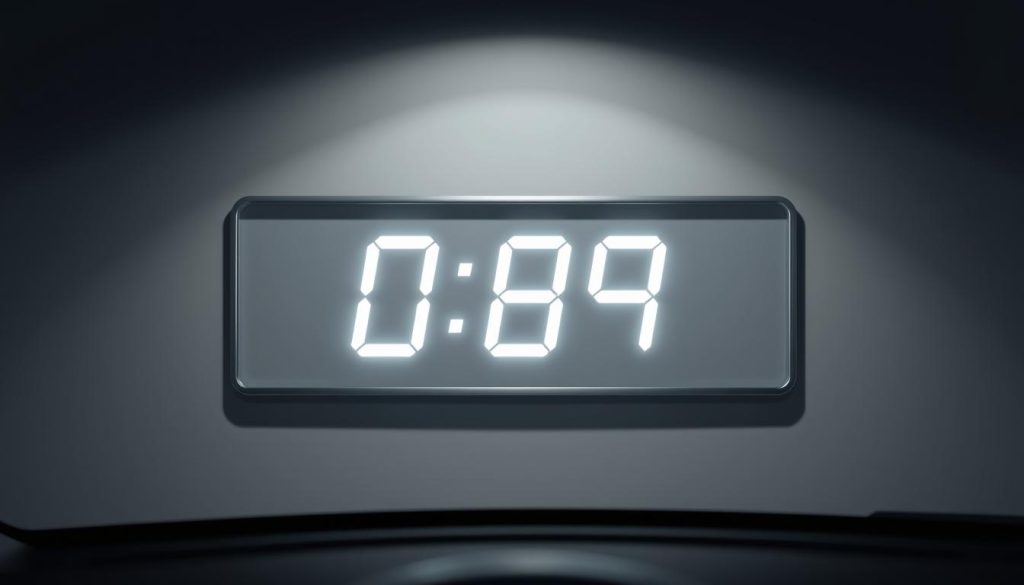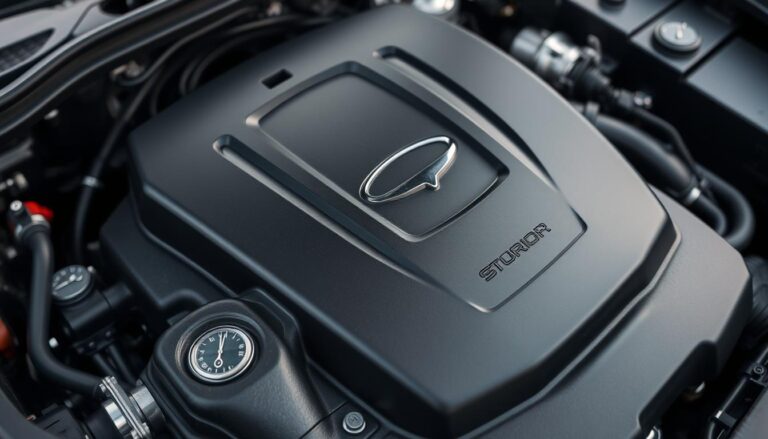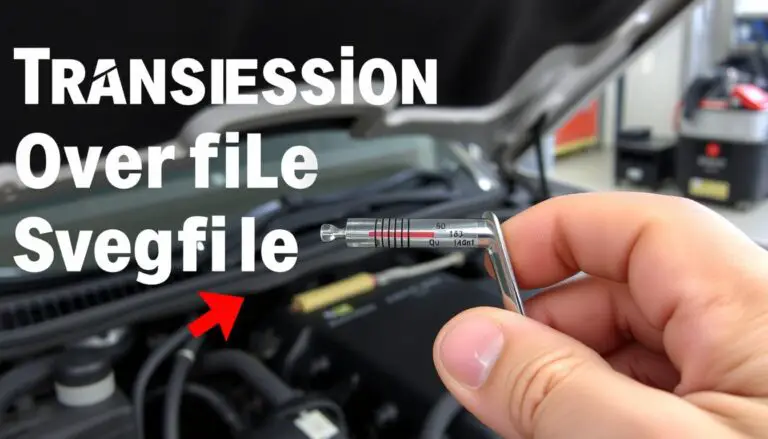Accurate odometer reading is crucial for vehicle owners, as it directly impacts vehicle mileage tracking and overall maintenance.
Knowing the correct vehicle mileage helps in determining a vehicle’s value, condition, and maintenance needs. For instance, a vehicle’s resale value is often influenced by its mileage, making accurate odometer reading essential. To learn more about the importance of odometer readings, you can visit our detailed guide on odometer readings and how to check.
Understanding how to correctly read an odometer, whether it’s mechanical or electronic, is vital for various practical applications, including fuel economy calculations and trip tracking.
Key Takeaways
- Accurate odometer readings are crucial for vehicle maintenance and resale value.
- Understanding the type of odometer in your vehicle is essential for correct mileage tracking.
- Odometer readings directly impact a vehicle’s overall condition assessment.
- Correct mileage tracking helps in calculating fuel economy.
- Electronic odometers provide a digital readout, making it easier to read the mileage.
Understanding Vehicle Odometers
Vehicle odometers are crucial components in determining a vehicle’s mileage and overall condition. They provide essential information about the vehicle’s usage, helping owners and buyers make informed decisions.
What Is an Odometer and Its Purpose
An odometer is an instrument that measures the distance traveled by a vehicle. Its primary purpose is to record the total mileage, which is vital for maintenance scheduling, assessing vehicle value, and ensuring compliance with odometer laws.
Mechanical vs. Digital Odometers
Odometers can be categorized into two main types: mechanical and digital. Mechanical odometers use a system of gears and dials to display mileage, while digital odometers use electronic displays. Modern vehicles often feature digital odometers, which are more accurate and less prone to tampering.
Legal Implications of Odometer Readings
Accurate odometer readings are critical due to their impact on odometer laws and vehicle transactions. Tampering with odometer readings is illegal and can result in severe penalties. Understanding the legal implications helps vehicle owners and buyers navigate transactions with confidence.
How To Read an Odometer: The Right Way To Do It
Correctly reading your vehicle’s odometer is vital for tracking mileage and ensuring proper maintenance. Understanding the basics of odometer reading can help you make informed decisions about your vehicle’s upkeep.
Basic Principles of Odometer Reading
The first step in reading an odometer is understanding its basic principles. An odometer measures the total distance traveled by a vehicle. Modern vehicles often have digital odometers, while older models may still use mechanical odometers.
Understanding Units (Miles vs. Kilometers)
It’s crucial to know whether your odometer displays miles or kilometers. Most vehicles in the United States use miles, while many other countries use kilometers. To avoid confusion, always check your vehicle’s dashboard for the unit of measurement.
Interpreting Decimal Places and Tenths
Odometers often display decimal places or tenths of a mile/kilometer. Understanding these can provide more accurate mileage readings.
Reading Whole Miles/Kilometers
To read whole miles or kilometers, simply look at the main display on your odometer. For digital odometers, this is usually a straightforward number.
Understanding Partial Miles/Kilometers
Partial miles or kilometers are often displayed as decimal points. For instance, if your odometer shows 50.2 miles, it means 50 miles and 0.2 of a mile.
| Odometer Type | Whole Units | Decimal Places |
|---|---|---|
| Digital | 50 miles | 0.2 miles |
| Mechanical | 50 kilometers | 0.5 kilometers |
By following these guidelines, you can accurately read your vehicle’s odometer and ensure you’re getting the most out of your vehicle.
Reading Analog Odometers Step-by-Step
Analog odometers, found in older vehicles, display mileage through a series of rolling numbers. These mechanical devices require a closer look to accurately determine the vehicle’s mileage.
Locating the Mechanical Odometer Display
The first step in reading an analog odometer is to locate the mechanical display, usually found on the dashboard. It’s typically positioned near the speedometer and other essential gauges.
Interpreting Rolling Number Displays
The rolling number display shows the total mileage. To read it correctly, look for the numbers that are fully visible and take note of any partially visible numbers.
Common Challenges with Older Mechanical Odometers
Older mechanical odometers can present challenges, such as stuck digits or partially visible numbers. Understanding these issues is crucial for accurate reading.
Dealing with Stuck Digits
If a digit is stuck, it may not display correctly. In such cases, the surrounding numbers can help estimate the correct reading.
Reading Partially Visible Numbers
When numbers are partially visible, look for the last fully visible number and estimate the next digit based on the visible portion.
Mastering Digital Odometer Displays
Digital odometers have become the norm in contemporary vehicles, offering a more precise and durable alternative to traditional mechanical odometers. Understanding how to navigate and read these digital displays is essential for any vehicle owner.
Navigating Modern Instrument Clusters
Modern vehicles feature sophisticated instrument clusters that house the digital odometer display. To access the odometer reading, drivers may need to navigate through various menus using the steering wheel controls or buttons on the instrument panel.

Reading LCD and LED Displays
Digital odometers use either LCD (Liquid Crystal Display) or LED (Light Emitting Diode) technology to display mileage. LCD displays are known for their clarity, while LED displays offer superior brightness. Regardless of the technology used, the digital odometer provides a clear and accurate reading of the vehicle’s mileage.
Accessing Advanced Odometer Information
Many modern vehicles allow drivers to access additional information related to their odometer readings. This can include trip odometer readings, average fuel economy, and more. To access this information, drivers can use the steering wheel controls or instrument panel buttons.
Using Steering Wheel Controls
Steering wheel controls provide a convenient way to navigate through the instrument cluster’s menus without taking your hands off the wheel.
Instrument Panel Button Functions
The instrument panel buttons offer another way to access various functions, including the digital odometer display and other related information.
Trip Odometers and Additional Features
Trip odometers are a valuable tool for drivers, offering insights into trip details and fuel economy. These features are designed to provide drivers with more control over their journeys, allowing for better planning and monitoring.
Setting and Resetting Trip Meters
To get the most out of your trip odometer, understanding how to set and reset it is crucial. Typically, this involves navigating through your vehicle’s instrument cluster menu. The process may vary depending on the vehicle’s make and model, but it’s usually straightforward. For instance, in some Toyota models, you can reset the trip meter by accessing the appropriate option in the display menu, similar to how you would reset the distance to empty feature.
Using Trip Odometers for Fuel Economy Tracking
One of the key benefits of trip odometers is their ability to help track fuel economy. By resetting the trip meter at the start of a journey or when refueling, drivers can monitor their vehicle’s fuel efficiency over different conditions. This information is invaluable for identifying driving habits or vehicle conditions that may be impacting fuel consumption.
Switching Between Display Modes
Modern vehicles often offer multiple display modes that can be toggled using buttons or controls on the steering wheel or dashboard. Understanding how to switch between these modes can enhance your driving experience. For example, you can switch between displaying the main odometer reading, trip meter readings, or even fuel economy data.
Toggling Between Trip A and Trip B
Many vehicles come equipped with dual trip meters, labeled Trip A and Trip B. This feature allows drivers to track two separate journeys or segments of a journey independently. Toggling between these two trip meters is usually done through a simple button press or menu navigation in the instrument cluster.
Troubleshooting Odometer Reading Issues
Troubleshooting odometer reading issues requires a systematic approach to identify and resolve problems. Odometer malfunctions can lead to inaccurate readings, affecting vehicle maintenance and resale value.
Dealing with Malfunctioning Displays
A malfunctioning display can make it difficult to read the odometer. Check for loose connections or worn-out display components. If the issue persists, consult a professional.
- Check for loose or corroded connections
- Inspect display components for wear or damage
- Consider consulting a professional mechanic for complex issues
Identifying Signs of Odometer Tampering
Odometer tampering is a serious issue that can affect a vehicle’s value. Look for signs such as inconsistent readings or worn-out dashboard components.

When to Consult a Professional Mechanic
If you’re unsure about the accuracy of your odometer reading or suspect tampering, it’s time to consult a professional mechanic. They can diagnose and fix complex issues, ensuring your vehicle’s odometer is accurate and reliable.
Practical Applications of Odometer Readings
The importance of odometer readings extends beyond mere curiosity, having several practical applications. Accurate odometer readings play a crucial role in various aspects of vehicle ownership.
Maintenance Scheduling Based on Mileage
One of the primary uses of odometer readings is maintenance scheduling. By tracking mileage, vehicle owners can schedule routine maintenance such as oil changes and tire rotations at the appropriate intervals, ensuring their vehicle remains in good condition.
Documenting Mileage for Vehicle Resale
Odometer readings are also essential when it comes to documenting mileage for vehicle resale. Accurate records can significantly impact the vehicle’s resale value, as they provide potential buyers with a clear understanding of the vehicle’s usage.
Tracking Business Miles for Tax Deductions
For individuals who use their vehicles for business purposes, odometer readings can help in tracking business miles for tax deductions. This can lead to significant savings during tax season.
Insurance Considerations Related to Mileage
Lastly, odometer readings can influence insurance considerations. Some insurance policies offer lower premiums for vehicles with lower annual mileage.
Accurate Odometer Reading: A Summary
Understanding how to read an odometer is crucial for vehicle owners and buyers alike. Accurate mileage is essential for assessing a vehicle’s condition, determining its value, and scheduling necessary maintenance.
This guide has covered the basics of odometer reading, including the differences between mechanical and digital odometers, how to interpret various display types, and troubleshooting common issues. By mastering odometer reading, individuals can make informed decisions when purchasing or maintaining a vehicle.
An odometer reading summary is vital for vehicle maintenance and resale value. Ensuring accurate mileage readings helps prevent potential disputes or issues down the line. By following the steps outlined in this guide, readers can confidently read their vehicle’s odometer and stay on top of necessary maintenance.
FAQ
What is the difference between a mechanical and digital odometer?
A mechanical odometer uses a system of gears and dials to display the mileage, whereas a digital odometer uses electronic displays, such as LCD or LED screens, to show the mileage.
How do I know if my odometer is accurate?
To verify the accuracy of your odometer, you can check it against a GPS device or a mileage tracking app, or consult a professional mechanic for an assessment.
What are the implications of odometer tampering?
Odometer tampering is a serious offense that can lead to fines, penalties, and even lawsuits, as it can deceive buyers about a vehicle’s true mileage and condition.
How do I read a trip odometer?
To read a trip odometer, locate the display on your dashboard, which is usually labeled “Trip A” or “Trip B,” and check the mileage reading, which can be reset as needed.
Can I use my trip odometer to track fuel economy?
Yes, you can use your trip odometer to track fuel economy by resetting it when you fill up your gas tank and then calculating the distance traveled and fuel consumed.
What should I do if my odometer is malfunctioning?
If your odometer is malfunctioning, you should consult a professional mechanic to diagnose and repair the issue, as an inaccurate odometer reading can lead to maintenance scheduling problems and other issues.
How do I document mileage for vehicle resale?
To document mileage for vehicle resale, keep a record of the odometer reading at regular intervals, such as during maintenance or inspections, and provide this information to potential buyers.
Can I use my odometer reading for tax deductions?
Yes, you can use your odometer reading to track business miles for tax deductions, by keeping a log of the mileage and purpose of each trip.
How does mileage affect insurance considerations?
Mileage can impact insurance considerations, as higher mileage vehicles may be considered higher risk, and some insurance policies may offer low-mileage discounts or other incentives.
What is the importance of accurate odometer readings for maintenance scheduling?
Accurate odometer readings are crucial for maintenance scheduling, as they help ensure that your vehicle receives necessary maintenance at the right time, preventing potential problems and prolonging its lifespan.


